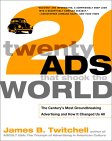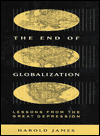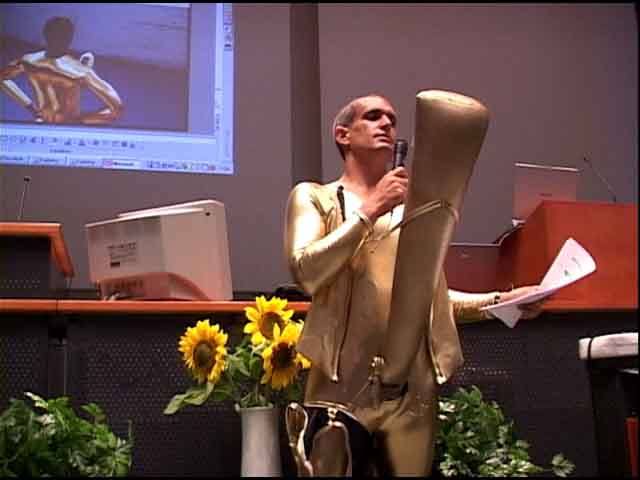
![]()
Subscribe to ideas and commentary from Z + Partners!
Recommend a site or give us feedback at blog@zpluspartners.com.
Search for past postings in the Z+Blog archive
![]()
|
Welcome to the Z+Blog!
What's Here: Pointers and commentary on the future, design, branding, innovation, sustainability and emerging issues collected by Z + Partners
Poetry, Markets and the Brain


With consensus among mainstream forecasters that the next 100 years
will be "The Biological
Century", we often overlook the tremendous strides that cognitive
science continues to make.
Less than five years ago, cognitive science was largely the domain of
academics studying mind-brain-body relationships through computational
neuroscience and psychophysics. Today, as Wired
reports, cog-sci has lept into the marketplace:
Cognitive science isn’t just being put to work for better marketing – it’s also helping to make more sophisticated products. There’s cog-sci fieldwork behind cereal ads, and lab experiments support the marketing of jeans. Cognitive scientists are investigating why kids might feel positive about, say, Coke but hate Pepsi; or why Zoog is a catchy add-on to the Disney brand.
Hybrid cog-sci/marketing ventures, like the Brighthouse Institute for Thought
Sciences, (which calls itself the world's first
"neoromarketingTM company") aim to use tools like neural
imaging to study exactly how the brain reacts to marketing stimuli.
Whether they will succeed is an open question. Personal taste is
famously plastic: we don't know if all brains react in the same way to
desireable stimuli, and the way in which we reacted yesterday may not be
the way we react tomorrow. Even if such ventures do succeed, its unclear
they will be of any real utility: knowing that the brain reacts to
powerful marketing messages doesn't necessarily make the creation of such
messages any easier.
But these are interesting lines of inquiry and they will likely grow in
influence over the coming years. Already, at places like the Institute of
Neuroaesthetics at University College London, researchers are dialoging
with artists and architects, and exploring the neurology of harmony.
It is a matter of time before such pure research begins to find real-world
application.
Long before they do, applied cog-sci will likely have made significant
inroads into understanding into other many other human domains, including
the worlds of work, home and play. And that suggests that the next century
will be at least as much a Neural one as a Biological one.
Where is your Web site?

Source: www.geourl.org
An open standard for 'geographically locating' a Web site in physical
space is essential if future location-based
Web services are really going to take off. Finally, just such as
standard has come to the Web!
GeoURL is a location-to-URL
reverse directory that will allow you to find Web sites based on their
proximity to a given location: find your neighbor's blog, perhaps, or the
web page of the restaurants near you. With a few metatags, you can add
your own site to their ever-growing directory. (Z + Partners, for example,
is located at latitude 40.67569, longitude -73.98049.)
Geotargeting will have an enormous impact on things like search
engines, trip planners and commerce in general. Imagine being able to
Google a local mechanic when you're broken down on the side of a road -
and don't know what town you're in! Or being able to scan the Web
for passing attractions as you drive down the road. Such geographical
targeting will provide a push to small businesses (like your local
drycleaner) to go online - and it will enable new kinds of 'physical
webrings' - out of which new kinds of communities, and commerce to emerge.
Today you can check out Web sites located within 500 miles of Z + Partners, by clicking here. You can even get amazing overhead maps that show exactly where each entity is "located".
Christopher Alexander's The Nature of Order
 The era of monumental tomes
is upon us. After slogging through Gould's 1400+ page Structure
of Evolutionary Theory, and Wolfram's equally hefty A
New Kind of Science, (the former woefully overwritten, the latter
woefully overrated) one could be forgiven for swearing off big science
books for a while. Yet a major new treatise has just been published which
might actually justify its War And Peace-like girth.
The era of monumental tomes
is upon us. After slogging through Gould's 1400+ page Structure
of Evolutionary Theory, and Wolfram's equally hefty A
New Kind of Science, (the former woefully overwritten, the latter
woefully overrated) one could be forgiven for swearing off big science
books for a while. Yet a major new treatise has just been published which
might actually justify its War And Peace-like girth.
Christopher
Alexander, superstar of architecture and (accidently) of computer
science, and author of A
Timeless Way of Building and A
Pattern Language, has finally published his major 4-volume tome, The Nature of Order.
Alexander's previous works are masterful, dense treatises on the nature
of structure -- and the kind of meaning we take from structure.
Alexander's thoughts have influenced everything from software design to
the way we look at antique carpets. As with previous thinkers of such magnitude and
reach, there is a bit of a cult around him, but Alexander's extraordinary
depth and detail have so far enabled him to resist becoming a pop philosophy icon.
From the website
(www.natureoforder.com):
The four books of the Nature of Order redefine architecture as we know it. Each of the books is independent, and deals with one facet of the problem. Taken together the four books redefine the cosmology that provides architecture with its underpinning; they redefine the procedures of planning, design and building; they redefine the style, the shapes of buildings and the forms of construction. Here is an entirely new way of thinking about the world, one likely to enter fields as diverse as computer science, sociology, philosophy, and art. As one writer has expressed it, "The books provide the language for the construction and transition to a new kind of society, rooted in the nature of human beings."
The four books, all essays on the topic of living structure, are connected and interdependent. Each can be read by itself, and each sheds light on one facet of the problem of living structure: First the definition, second the process of generating living structure, third the practical vision of a world made of living structure, and fourth, the cosmological underpinnings and implications caused by the idea of living structure.
It sounds squishy and fraught with overpromise: but all of Alexander's works could be described in such florid prose -- and those actually deliver terrific insights.
Bioinformatics Wants To Be Free
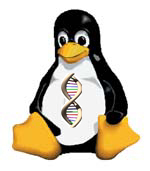
In India, a new genetically modified, protein-enhanced potato (called a "protato") is being developed to feed India's poor.
The brainchild of Dr.
Govindarajan Padmanaban and Dr.
Asis Datta, the new breed of potato will contain 30% more protein, as
well as increased amounts of several essential amino acids. The new spud
is the cornerstone of a 15-year plan to end malnutrition among India's
neediest children unveiled in December 2002 by Padmanaban at the Royal Society in London.
Unlike similar
genetically modified crop varieties developed to resist disease or
insects, or even other nutrient-fortified
GMOs, the 'protato' lacks one element shared by almost all previous
efforts: a transnational corporate patent holder.
When I asked Dr. Padmanaban about this, his answer was
illuminating:
"...I believe this GM patent controversy is irrelevant to developing countries and it is essentially [part of] an economic war between US and Europe, both partners over producing grains. India needs more in terms of quality and quantity to meet the requirements of the growing population. With land, water etc becoming limiting factors, GM plants are an answer. One can have regulations to take care of the concerns of GM, but the attitude of the activists seems to be to stifle and kill the initiatives and let India continue to be a dependent country forever."
Without a Monsanto or AstraZeneca behind it, and with its humanitarian aims, there has been little activist outrage over the protato - an unusual claim for any GM crop. But the new protein-packer may be something more: a very early sign of the development of "open-source", patentless bioengineering.
This concept, in which the research, engineering and intellectual
property models of open-source software get applied to bioengineering has
been getting some serious think-through in the past few months. A piece by
the Washington Monthly, "May
the Source Be With You," explains the general principles.
Dr. Robert Carlson, a scientist at Applied Minds, has written two
very thoughtful pieces on this topic and its implications. Both "Open Source Biology"
(pdf) and "Biological
Technology in 2050"(pdf) which won an Economist/Shell prize, are
excellent reads. Finally, Eugene Thacker, of the Georgia Institute of
Technology, has put together an even more speculative piece, entitled "Open
Source DNA?" (pdf).
As the cost of bioinformatics software and equipment continue to
decline, will Big Biotech inevitably find itself "bionuxed"
(i.e. "linuxed"?) There are already tools (such as BioPerl, an open-source set of tools for
genomics, informatics and life science research) conferences being set up. With
the costs for a modest bioengineering rig set to drop to just over $10,000
in the next few years, the era of the garage biohacker may soon be upon
us.
Envisioning Global Values
 |
The January 2003 issue of the Economist magazine has a terrific analysis of the similarities and differences between America's values, various European values, and those of other regions in the world. The article is notable for the above extraordinary map, based on on the World Values Survey conducted at the University of Michigan. The WVS has carried out representative national surveys of the basic values and beliefs of publics in more than 65 societies on all six inhabited continents, containing almost 80 percent of the world's population since 1981.
The Economist article explores the rift between American values (which
the WVS identifies as a mix of "traditional" values and "self expression
values") and European values (which also are oriented around
self-expression, but are decidedly more secular):
...[In the chart] America's position is odd. On the quality-of-life axis, it is like Europe: a little more “self-expressive” than Catholic countries, such as France and Italy, a little less so than Protestant ones such as Holland or Sweden. This is more than a matter of individual preference. The “quality of life” axis is the one most closely associated with political and economic freedoms. So Mr Bush is right when he claims that Americans and European share common values of democracy and freedom and that these have broad implications because, at root, alliances are built on such common interests.
But now look at America's position on the traditional-secular axis. It is far more traditional than any west European country except Ireland. It is more traditional than any place at all in central or Eastern Europe. America is near the bottom-right corner of the chart, a strange mix of tradition and self-expression.
Americans are the most patriotic people in the survey: 72% say they are very proud of their country (and this bit of the poll was taken before September 2001). That puts America in the same category as India and Turkey. The survey reckons religious attitudes are the single most important component of traditionalism. On that score, Americans are closer to Nigerians and Turks than Germans or Swedes.
"Robocop Waxing The Floors"
A colleague sent along this humorous sighting of the Segway personal transporter today. I thought it was funny enough to share:
I saw my first Segway in Hartsfield Airport (ATL) about a week ago. An Atlanta policeman was verrrry slowly riding (driving?) it beside an airport security guy.
I came away with a strange mental image of Robocop waxing the floors. The slightly dusty, big wheels gave the vehicle the aura of a Home Depot rental floor polisher. Of course, the rider/driver did appear to be seven feet tall astraddle the thing.
As long as the bad guys run away in straight lines down uncrowded avenues, this may have possibilities. Otherwise, a horse gives an officer a much higher, more intimidating, and more flexible presence. But hopefully not in the south terminal atrium. The floors look better with Segway.
This is the future?
For more fun, check out Slate's collection of Segway cartoons.
Sensual Ad for Sustainable Living
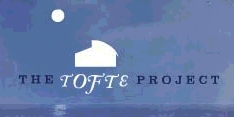
The Tofte Project is one of
the most beautiful, thoughtful websites I've visited in a long time. It
details the development of the Tofte Cabin, a
sustainably designed cold cabin on the north shore of Lake Superior, in
northern Minnesota.
Designed by Sarah
Nettleson, the remodled 1947 cabin has won well-deserved awards from
the American Institute of Architects for
its environmentally-friendly design: the cabin's energy needs for heating
and appliances are 47% of those for a similar cabin, and are met onsite by
building integrated photovoltaics, a wind generator and a groundsource
heat pump, using nonrenewable energy as backup. Framing lumber is from
recycled sources or from certified sustainable forests, and more than 95%
of demolition and construction waste was either reused or recycled.

Interior of the Tofte Cabin.
Source:http://www.zpluspartners.com/zblog/www.sarah-architects.com
Not only is the cabin itself extremely beautiful, but the site,
designed by the incredibly talented Minneapolis interactive design firm Popular Front, is the best
multimedia advertisement for sustainable building I've ever
seen.
Textiles of Tomorrow
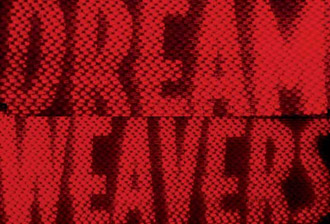
The January 2003 issue of National Geographic magazine has a terrific,
photo-laden essay on the textiles of tomorrow. The article explores
the world of smart fibers that could take humans to outer space, make
soldiers invisible, keep people in touch with their friends, and move
buildings. The full-length article is only available in the print edition,
but the online component has exclusive material that makes it well worth
reading all by itself.
I was particularly intruiged by Alex
Soza's antigravity jacket, which gets mentioned in the print piece but
not shown. Soza, a Danish fashion designer, is conceptually exploring the
world of smart materials before they 'really' appear on the market. (His
motto could only have come from a fashion designer: "Why be intelligent
when you can wear it?")

The jacket, just one of Soza's many interesting projects, is made with
light plastic inflated with helium, balanced so as to weigh nothing. When
you take the jacket off, it simply floats in the air.
Soza isn't the only one making interesting fashion out of new textile
technologies, real or imagined. Italy's Corpo Nove, in Milan, recently
released a shirt that rolls its own sleeves up when the temperature
rises:

And Megan Lee Galbraith, at the Media Lab's Aesthetics and Computation
group, is putting together interesting thoughts on
computational fashion concepts, including interactive and reactive
clothing.
There's plenty of more esoteric stuff on the horizon. Nexia Biotechnologies, a Canadian
biotech firm, (NXB.TO) has made
waves recently by inserting genes into goats that make them produce milk
containing the proteins for spider's silk. The extracted proteins will be
used to produce fibers that are 5 times stronger than steel. (Nexia calls
it "biosteel(tm)".)
And at the Army's Natick Soldier Systems Center, researchers are developing
“interactive” textiles, a term which refers to active, multifunctional
textiles that exhibit at least one unique and valuable characteristic that
is considered to be “smart”. Examples are materials
that sense and react (e.g., color change, oscillate, swell), conduct
electricity, perform computational operations or collect/store energy.
As intruiging as these innovations are, the National Geographic piece
misses an important point: the most important work in textiles might be
the kind that doesn't change what fabric is or does, but how its produced.
Michael Braungart and William McDonough, of McDonough Braungart Design Chemistry (MBDC),
have created
new methods and processes for creating "sustainable" textiles.
With their partner DesignTex, MBDC
has redesigned
polyester to eliminate the antimony that makes traditional polyester
so detrimental to the environment. And they've not only created a system
for manufacturing 100% biodegradable fabrics, but opened it to the entire
textile industry - an example of 'open source
manufacturing'. Learn more about their Climatex process and line of
products at http://www.climatex.com/en/start_e.html.
The Yesmen: Culturejamming's Maestros of Impersonation

A few weeks from now will bring "Catch Me If You
Can" to theatres, the mostly-true story of Frank W. Abagnale, one of the most
daring con-men, forgers, imposters, and escape artists in American
history. Abagnale donned a pilot’s uniform and copiloted a Pan Am jet,
masqueraded as the supervising resident of a hospital, practiced law
without a license, passed himself off as a college sociology professor,
and cashed over $2.5 million in forged checks, all before he was
twenty-one.
As if to prove the fluidity of American fame, Abagnale has since become
one of the world's most respected authorities on the subjects of forgery,
embezzlement and secure documents, consulting with the FBI and major
corporations for more than 25 years.
Fate may not be so kind to The
Yesmen, culturejamming dadaist maestros of impersonation and media
activism. The group, who call themselves "a genderless, loose-knit
association of some three hundred impostors worldwide" haven't done
anything as risky as Abagnale -- they've never tried to pilot a plane
without a license, for example -- but they have pulled off an amazing
series of stunts that are so funny, and so clever, that they do what more notorious
anti-corporate activists can't: they make people listen.
Now their foes -- powerful corporations and business interests -- are
striking back, using new federal laws to suppress their often-brilliant
forms of anti-corporate dissent.
Consider the following parable. In March 2000, the Yesmen created a
fictitious website, GATT.org, that
duplicated the real website for the World
Trade Organization. (The parody was apparent to anyone who could read
English: the lead announcement on the GATT.org site proclaimed such things
as "[WTO] Disbanding schedule announced".)
The phony website lured the unsuspecting organizer of a pan-European
textiles industry conference into inviting one of The Yesmen to give a speech at their event
- ostensibly as a representative of the WTO.
While 'pretending' to be a member of the WTO, the Yesmen presenter,
Hank Hardy Unruh, argued before the conference delegates that the U.S.
Civil War was a useless waste of time, and that India would have done
better without Gandhi -- positions that The Yesmen believe are implied by
the WTO's present course in the world.
At the 'climax' of Unruh's presentation, he ripped off his business
suit to reveal a shiny gold suit with an attached inflatable 4-ft
phallus..
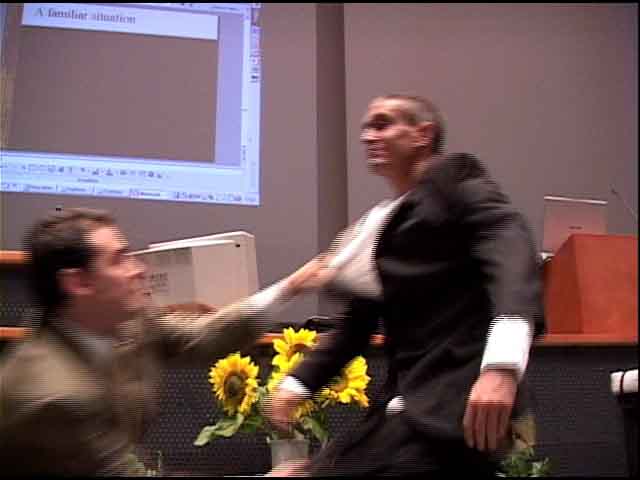
click on images for larger
version
On the tip was a 'videoscreen' that allowed the wearer to administer electic shocks to factory workers remotely. This 'innovation in management technology from the World Trade Organization' was just one of the many new inventions the delegates could look forward to in the future.
Of course, the media
went crazy when the gag was revealed, although oddly, not a single
delegate objected to Unruh's speech during the conference.
Not surprisingly, these kinds of antics have inspired "Empire Strikes
Back"-like responses from companies and organizations targeted by The
Yesmen. As reported
in the New York Times, one of The Yesmen's recent thoughtbombs has
incurred the wrath of Dow
Chemical, which has used the implied power of the Digital Millenium
Copyright Act (DMCA) to shut down not
only The Yesmen, but their ISP as well.
The New York artist-run ISP The
Thing provides Internet connections for dozens of New York artists and
arts organizations, and its liberal attitude allows its clients to exhibit
online works that other providers might immediately unplug. When The
Yesmen, who are on the The Thing's network, recently created a parody site of Dow, the company
legally threatened The Thing's bandwidth provider, NTT/Verio, with a DMCA
infringement lawsuit. Verio in turn pulled the plug on the The Thing,
threatening disruption for dozens of art-related firms, including several
local museums. The Thing, and its many clients, now have 50 days to find a
new provider.
This is a perfect example of a chilling effect - the use of
trademark law to legally harass speech which is clearly a political
parody, which has the effect of 'chilling' speech online and off. Dow's
threat impacts so many innocents that the 'cost' of The Yes Men's parody
is raised to untenable levels, and that's too bad: they're among the
smartest critics going.
CODA:
Here's a recently published valedictory
story in Chemical and Engineering News on Dow's efforts against
'internet mischief'. it's always nice to hear the other side of the story.
The Billboard Is The Computer
In an advertising ploy right out of Steven Spielberg's "Minority
Report," electronic billboards in the Bay Area and Sacramento are being
equipped to profile commuters as they whiz by -- and then instantly
personalize freeway ads based on the wealth and habits of those drivers.
As reported
in the SFGate, the billboards -- in Palo Alto, Daly City and Fremont
-- will pick up which radio stations are being played and then instantly
access a vast databank of information about the people who typically
listen to those stations. The electronic ads will then change to fit
listener profiles.
The dynamic messaging itself is not the interesting part -- although it
is a little creepy. For me, it will be far more interesting to know what
the real-time tastes and demographics are of the people driving near me
--although that may be hard to reverse-engineer from a 'targeted' ad. Am I
cruising along in a pack of NPR-listening liberals or Limbaugh-listening
conservatives? A wise advertiser could just put up the statistics, i.e.:
"Based on your collective radio preferences, 40% of the cars driving in
your pack are upscale, educated, democrats".
That would be sure to grab attention.
The Politics of Plenitude
Grant McCracken is one of the
most intelligent, under-exposed cultural critics working today.
(The other one is James
Twitchell.)
An anthropologist by training, McCracken was the founding director of
the Institute of Contemporary Culture, and now teaches in the Department
of Art History and Communications Studies at McGill University in
Montreal. He is the author of Culture
and Consumption (a rather academic treatise) and the excellent Big
Hair: A Journey into the Transformation of the Self.
But perhaps the best thing I've ever read by McCracken is also the
shortest: a 1998
essay in Reason magazine (then
edited by the profoundly smart Virginia
Postrel) on the politics of plentitude.
The essay
focuses on how the force of plentitude -- the rapidly multiplying and
diversifying number of groups, forms, identities that inhabit our society
bedevil both the political 'left' and 'right'.
McCracken brilliantly savages both sides:
...It is as if the right can't discriminate between difference that matters and difference that doesn't. Teen fashions, rock lyrics, and certain prime-time TV shows are not differences that matter. But with no operative theory of plenitude, the right must dispute every departure from convention. Worse, it must incline to moral panic. Surely some differences are, in the apposite language of the Protestant Revolution, a "thing indifferent": In the larger scheme they do not matter.
...The first symptom of difficulty is the narrowness with which the left defines diversity. The only real plenitude that counts in the left's scheme is that which has an explicitly oppositional quality. Thus, women's groups are "diversity," but country and western line dancing groups are not. Both of these groups may equally engage the individuals within them, both may represent a very substantial shift in cultural categories and social rules, both may mark differences that will continually breed differences, but it is only when the group is explicitly at odds with the mainstream that it qualifies as interesting.
I love McCracken's writing. On his personal web site, is a larger e-book
version of his work on plentitude.
"Words Through The Speaking Tube Give Us A Special Vibrancy"
Here is a 19th century prediction of the imminent demise of books by french illustrator Albert Robida (1848-1946) and writer Octave Uzanne (1852-1931). Writing and drawing in 1894, Uzanne and Robida give us predictions of a post-literate society. Music and speech are everywhere - newspapers are forgotten, and news presenters are valued for their emotional tone instead of the accuracy of their reporting:
"But what of the future of books? The narrator argues that Gutenberg's invention will soon disappear. Reading causes lassitude and wearies us tremendously. Words through the speaking tube, however, give us a special vibrancy. The gramophone will destroy printed works. Our eyes are easily damaged, but our ears are strong.
"But, his listeners object, gramophones are heavy and the cylinders easily damaged. This will be taken care of; new models will be built which will fit in the pocket; the precision of watchmaking will be applied to them. Devices will collect electricity from the movements of the individual, which will power the gramophones.
"The author will become his own editor. In order to avoid imitations and counterfeits, he will deposit his voice at the Patent Office. Instead of famous men of letters, we will have famous narrators. The art of diction will become extremely important. The ladies will no longer say that they like an author's style, but that his voice is so charming, so serious, that he leaves you full of emotion after listening to his work--it is an incomparable ravishment of the ear."
The original piece is, unfortunately, only available in French. The Google translation is ok, but babelfish seems to do a better job, even though you have to type to URL in manually.
Thanks to BoingBoing
and Bruce Sterling's
Schism Matrix
No More Red White and Burger?
 The
December 2002 issue of Business
2.0 has a terrific, too-brief story on how McDonald's
keeps its local customers happy in hotbed centers of anti-Americanism.
Almost all of the examples are of the 'wink-wink' variety -- such as
having virulently anti-Isreal
pop stars sing their ad jingles in Egypt, and adding a nationalist cap
to the Golden Arches in Serbia to signal to locals that the company was
anti-NATO during the bombing of Belgrade. I wonder -- is this what
anti-corporate activists have in mind when they try to get companies to
"respect" local cultures?
The
December 2002 issue of Business
2.0 has a terrific, too-brief story on how McDonald's
keeps its local customers happy in hotbed centers of anti-Americanism.
Almost all of the examples are of the 'wink-wink' variety -- such as
having virulently anti-Isreal
pop stars sing their ad jingles in Egypt, and adding a nationalist cap
to the Golden Arches in Serbia to signal to locals that the company was
anti-NATO during the bombing of Belgrade. I wonder -- is this what
anti-corporate activists have in mind when they try to get companies to
"respect" local cultures?
Granted, McDonalds is a franchise operation, and couldn't control every
store if it wanted to. But the above cases suggest that this kind of
political 'flexibility' is in some way driven, or at least tolerated, from
within.
And it raises interesting questions: In an era of 'muscular' American
foreign policy, how far will American global corporations (have to)
distance themselves from their own origins to stay in business? Will US
unilateralism actually accelerate 'nationless' global enterprise?
CODA:
Here's a terrific Associate
Press story on McDonald's in Serbia (in PDF -- scroll down to read
once loaded) that actually includes the unironic quote from a McDonald's
worker: "We are beyond politics". The gist of the story is that McDonald's
succeeded here simply by "...preserving the American brand and updating it
- making it more international."
Indeed.
Exploring The Great Transition
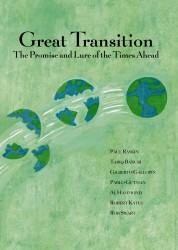 The Stockholm Environment Institute and
the Global Scenarios Group, an
international initiative in alternative futures, have jointly published a
truly wonderful ebook on global sustainability. "The
Great Transition: The Promise and Lure of the Times Ahead" (pdf) is an
articulate, thoughtful and well-researched look at all of the dimensions
of sustainability and alternative scenarios for global development and
collapse. Best of all, the whole text is available online. This is a
quick, but very provocative read.
The Stockholm Environment Institute and
the Global Scenarios Group, an
international initiative in alternative futures, have jointly published a
truly wonderful ebook on global sustainability. "The
Great Transition: The Promise and Lure of the Times Ahead" (pdf) is an
articulate, thoughtful and well-researched look at all of the dimensions
of sustainability and alternative scenarios for global development and
collapse. Best of all, the whole text is available online. This is a
quick, but very provocative read.
A Visual Map of Biodiversity Loss
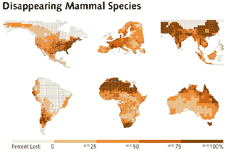
click on image for larger version
While working on a recent research project, I came across an amazing
paper by Mexican ecologist Gerardo Ceballos and Paul Ehrlich,
the Bing Professor of Population Studies at Stanford University. The paper
(.pdf), in the journal Science looks at the
global decline of 173 species of mammals for which long-term records have
been kept. I love these kinds of maps - they visualizations anchor the
often abstract conversation that surrounds issues like biodiversity and
climate change.
A Seriously Great Corporate Magazine
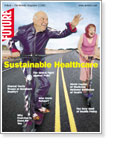
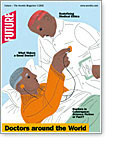
The
Future, the quarterly magazine of pharmaceutical company Aventis, is
something quite extraordinary: a corporately sponsored publication by a
company at the forefront of some thorny bioethical issues that actually
deals with those issues in a no-nonsense way. They did a thoroughly
respectable job for instance, exploring when
life begins and the
patenting of the genome. (They deal with less controversial stuff too
- check out recent articles on social
networks, and technovegetarianism.
Best of all, if you go to this
page and click on 'Order Print Version', they'll send you a stack of
them for free!
Now, if they could only get their homepage dropdown
menus in order...
Zazen in the Boardroom
MIT/Sloan professor Otto Scharmer's project, Dialog on Leadership, is certainly a sign of things to come in the field of management. A student of Peter "Mr. Learning Organizations" Senge and the leading peace researcher Johan Galtung, Scharmer has spent time bringing together some of the most interesting voices on emerging change to talk about the future of leadership. Participants range from well known folks like Brian Arthur, founding father of complexity research, to the lesser known Buddhist master Nan Huai Chin.
The working papers on the site sound new-agey, with titles like "The Seven
Meditative Spaces of Leadership" and "The Three
Gestures of Becoming Aware", but there's real depth here, with
rigorous thinking about how leaders can learn to understand emerging
futures. Again and again, the conversants return to the idea that in an
era of clashing forces, increasing complexity, and rapid evolution, the
quality of awareness determines performance. Again and again, the
participants encourage leaders to open their minds to new ways of knowing,
sensing and presencing.
Meanwhile, at the other end of Massachusetts, Mirabai Bush and the
teachers and researchers at The Center for Contemplative Mind
in Society are doing just that - bringing meditative skills to the
leadership teams of major corporations like Monsanto.
The incorporation of meditative practices and new ways of knowing
into the conversation on organizational leadership is not new - it's
enjoyed recurring interest since the 1960s - but Scharmer and Bush
represent something different - their efforts seem to transcend the pat orientalism
of typical business thinking about 'Eastern'
approaches to management problems. Theirs is the slow and quiet
working out, and working together, of something new and genuinely
valuable. They face an uphill climb; in today's bottom line, hard-metrics
environement, they're advocating the 'softest' measure of all.


